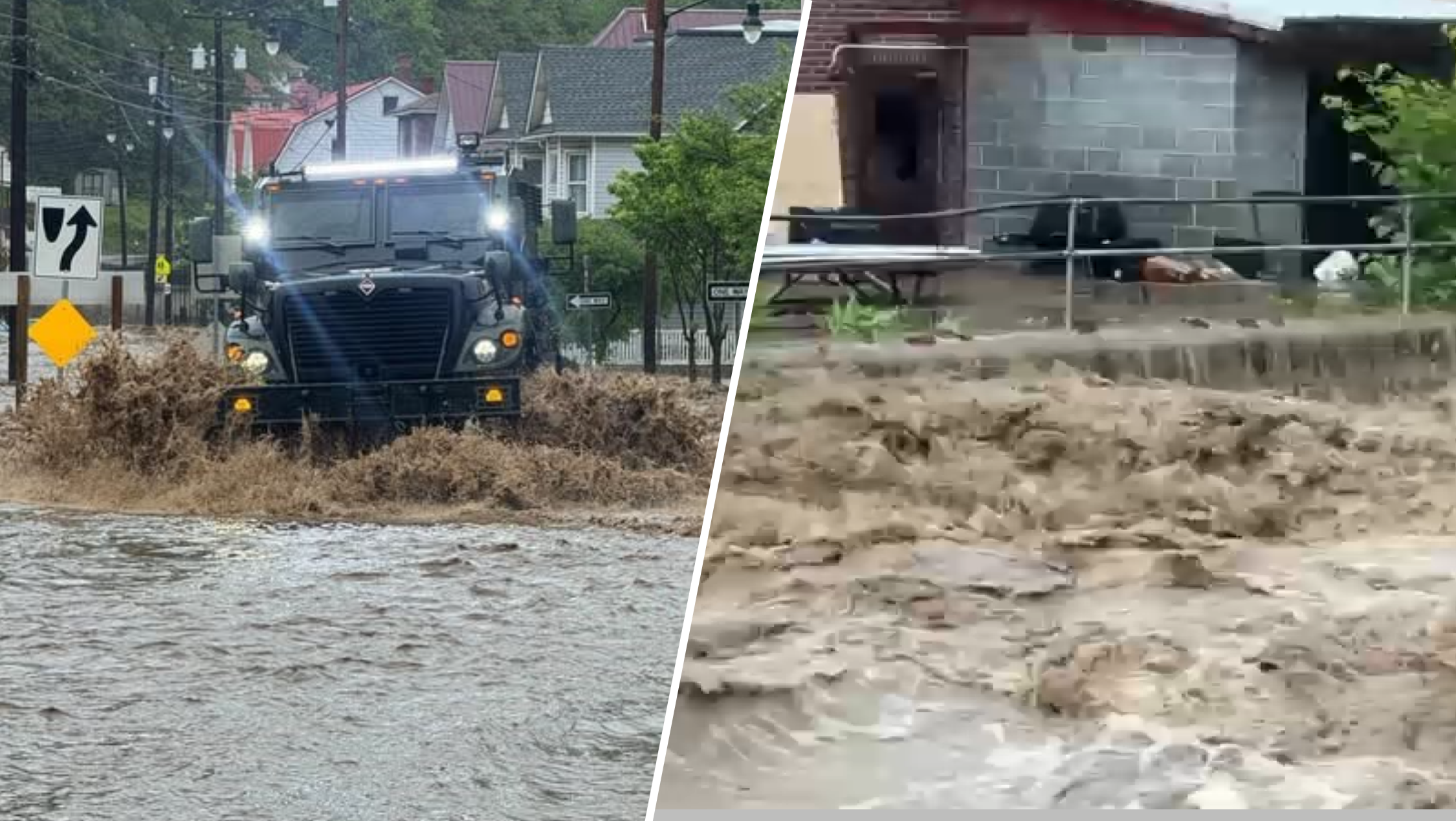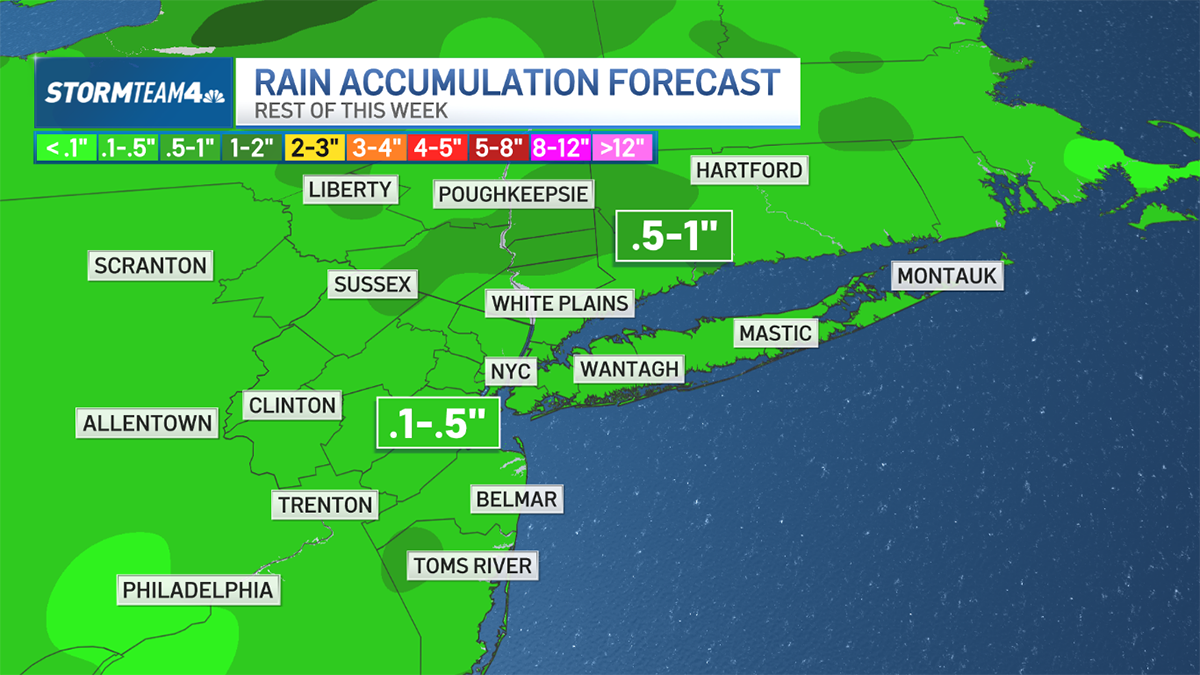Flash Flood Alert: NYC & Tri-State Braces for Heavy Rain!
New York Under the Rain: Flash Flood Watch as Heavy Rain Arrives!
Heads Up, Tri-State! Get Ready for a Wet Weekend
Alright New Yorkers, Mother Nature is at it again! We're expecting a deluge of rain to soak the tri-state area starting Thursday afternoon and lingering into Saturday. Think of it as Mother Nature's early tears of joy (or perhaps frustration with our collective weather complaints). This could mean a soggy end to the work week and potential flash flooding. But don't despair! There's a silver lining – the skies are expected to clear just in time for a gorgeous Mother's Day!
Thursday's Damp Start: The Pre-Weekend Drizzle
Remember that umbrella you swore you'd never forget again? Well, dig it out! Scattered showers are predicted to pop up by mid-afternoon on Thursday. These showers are expected to grow in intensity and coverage as the day progresses, meaning your evening commute could be a bit of a soggy mess, especially if you're north or west of the I-95 corridor. Consider yourself warned: plan accordingly! Think about it: is working from home an option? Maybe leave the office a tad early? It's always better to be prepared than to be caught in the rain!
Friday's Downpour: Get Ready for a Soaking
Hold on to your hats, folks! Thursday was just a warm-up. The real show starts overnight and continues into Friday morning. We're talking moderate to heavy rain possible throughout the entire day. Expect conditions to be consistently wet, with the heaviest rainfall predicted during the morning hours.
Rainfall Totals: How Much Can We Expect?
So, how much rain are we actually talking about? Experts predict total rainfall amounts of up to 2 inches across the region. But here's the kicker: some areas could see locally higher amounts. Translation: your particular neighborhood could get hit even harder. We're talking the potential for localized flooding, so keep a close eye on those low-lying areas!
Understanding Flash Flood Potential
Let’s talk about the elephant in the room: flash floods. What causes them, and why are we potentially at risk? Flash floods occur when rainfall exceeds the land's ability to absorb it, leading to rapid runoff. Considering the recent rainfall in some areas and the expected heavy downpours, the ground is already saturated. This increases the risk of flash flooding dramatically.
Factors Contributing to Flash Floods
- Saturated Ground: The ground can't soak up any more water!
- Heavy Rainfall Rates: Intense downpours overwhelm drainage systems.
- Urban Areas: Pavement and concrete prevent water absorption.
- Steep Terrain: Water flows downhill quickly, gathering momentum.
Interactive Radar: Your Weather Wingman
(Assume that the Javascript code for the interactive radar would be placed here).
Commuting Considerations: Navigating the Soggy Streets
Okay, let's get practical. How will this rain affect your commute? Public transportation could experience delays due to flooded tracks or signal issues. Road travel will be treacherous, with reduced visibility and hydroplaning risks. Bottom line: give yourself extra travel time and drive with extreme caution!
Safety Tips for Driving in Heavy Rain
- Slow Down: Reduce your speed significantly.
- Increase Following Distance: Give yourself more space to react.
- Turn on Headlights: Even during the day, headlights improve visibility.
- Avoid Standing Water: Hydroplaning is a real danger!
- Never Drive Through Flooded Roads: Turn around, don't drown!
Home Preparation: Protecting Your Property
Don't just think about the commute; think about your home! Take some proactive steps to minimize potential damage from the rain.
Protecting Your Home from Flooding
- Clear Gutters and Downspouts: Ensure rainwater can flow freely away from your home.
- Move Valuables: Raise valuable items off the floor in basements.
- Check Sump Pumps: Ensure your sump pump is working correctly.
- Seal Windows and Doors: Prevent water from seeping into your home.
Mother's Day Forecast: Sunshine and Smiles!
Now for the good news! While Friday might be a washout, the forecast for Mother's Day is looking spectacular. Expect sunshine, clear skies, and pleasant temperatures. Perfect weather to celebrate the amazing moms in our lives! So, plan that picnic, brunch, or outdoor activity – Mom deserves it!
Staying Informed: Your Weather Resources
It's crucial to stay updated on the latest weather forecasts and warnings. Here are some resources to keep you informed:
Reliable Weather Information Sources
- Local News Channels: Check your local news for up-to-the-minute updates.
- National Weather Service: The official source for weather information.
- Weather Apps: Use reliable weather apps on your smartphone.
- Emergency Alerts: Sign up for emergency alerts from your local government.
The Bigger Picture: Climate Change and Extreme Weather
While this specific weather event is just that – a weather event – it's important to consider the broader context of climate change. Are we seeing more frequent and intense rainfall events? Many scientists believe that climate change is contributing to more extreme weather patterns around the globe. Understanding the science behind climate change is crucial for preparing for the future.
Community Preparedness: Neighbors Helping Neighbors
During times of severe weather, it's essential to look out for your neighbors. Check in on elderly residents or those with disabilities. A little bit of kindness can go a long way in ensuring everyone's safety.
Flood Insurance: Is It Worth It?
Have you considered flood insurance? Standard homeowner's insurance policies typically don't cover flood damage. If you live in an area prone to flooding, flood insurance is definitely something to think about. It can provide crucial financial protection in the event of a flood.
Beyond the Rain: Dealing with Post-Storm Cleanup
Once the rain stops, the cleanup begins. Be cautious of downed power lines, standing water, and debris. Wear protective gear like gloves and boots when handling floodwater, as it can be contaminated. Safety should always be your top priority during the cleanup process.
Conclusion: Stay Safe and Prepared!
So, there you have it, New York! Heavy rain is on its way, potentially leading to flash floods. Stay informed, be prepared, and drive safely. Remember, this too shall pass, and beautiful Mother's Day weather is right around the corner! The key takeaways are: expect heavy rain, prepare for possible flooding, stay informed through trusted sources, and be cautious during commutes. But most importantly, stay safe and look out for each other!
Frequently Asked Questions
-
What is the difference between a flash flood watch and a flash flood warning?
A flash flood watch means that conditions are favorable for flash flooding to occur. A flash flood warning means that flash flooding is imminent or is already occurring. Take action immediately if a flash flood warning is issued for your area.
-
How can I find out if my area is prone to flooding?
Check with your local government or emergency management agency. They can provide flood zone maps and information about flood risks in your area.
-
What should I do if I'm caught in a flash flood while driving?
The safest thing to do is to abandon your vehicle and seek higher ground. However, if you are unable to safely exit the vehicle, stay inside and call for help. Never drive through flooded roads, as even shallow water can sweep your car away.
-
How can I protect my car from flood damage?
If possible, move your car to higher ground before the flooding begins. If you can't move your car, try to park it in a location that is less likely to flood, such as a parking garage or a high spot in a parking lot.
-
Where can I get sandbags to protect my home from flooding?
Contact your local government or emergency management agency. They may provide sandbags to residents in flood-prone areas. You can also purchase sandbags at hardware stores.



